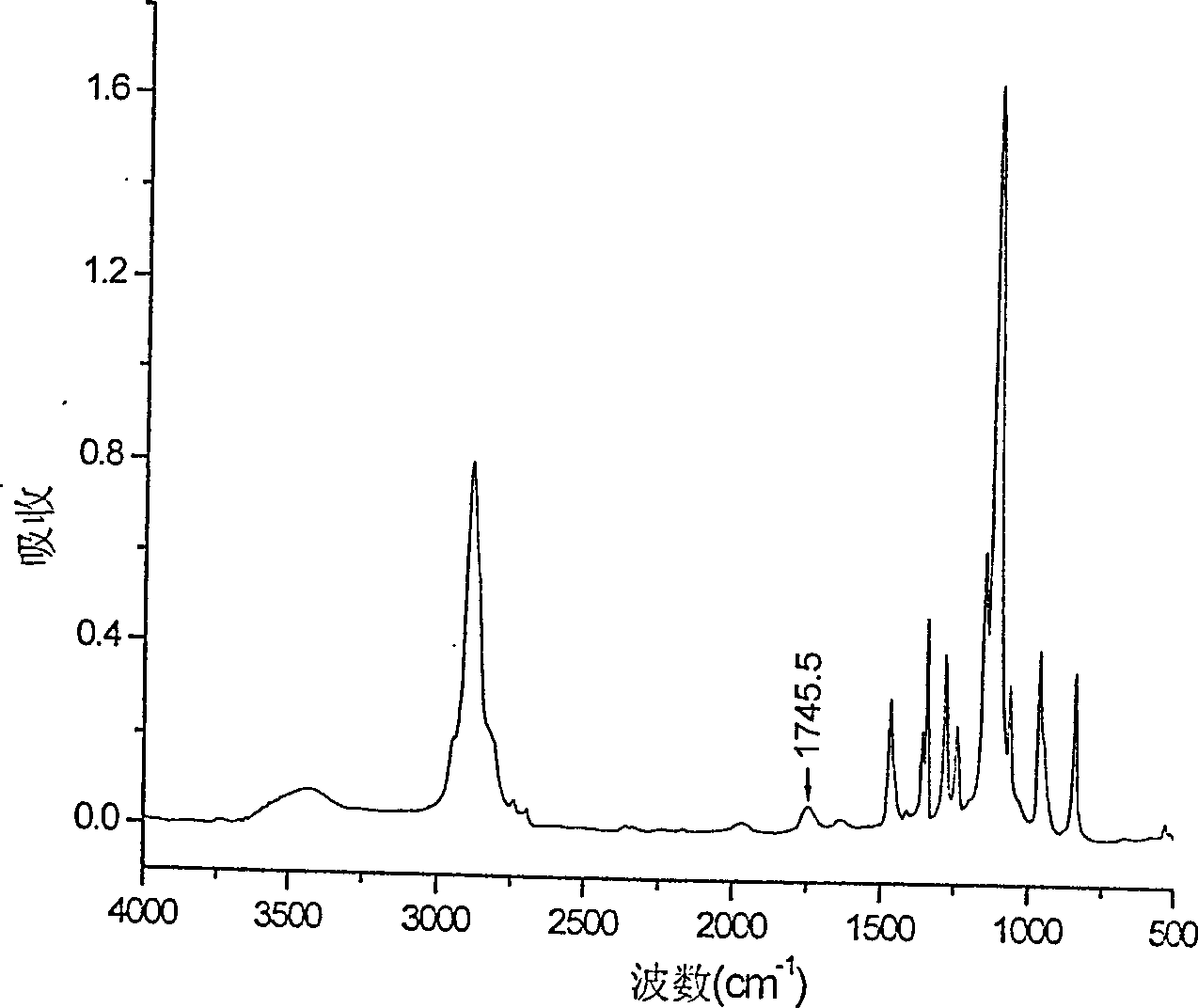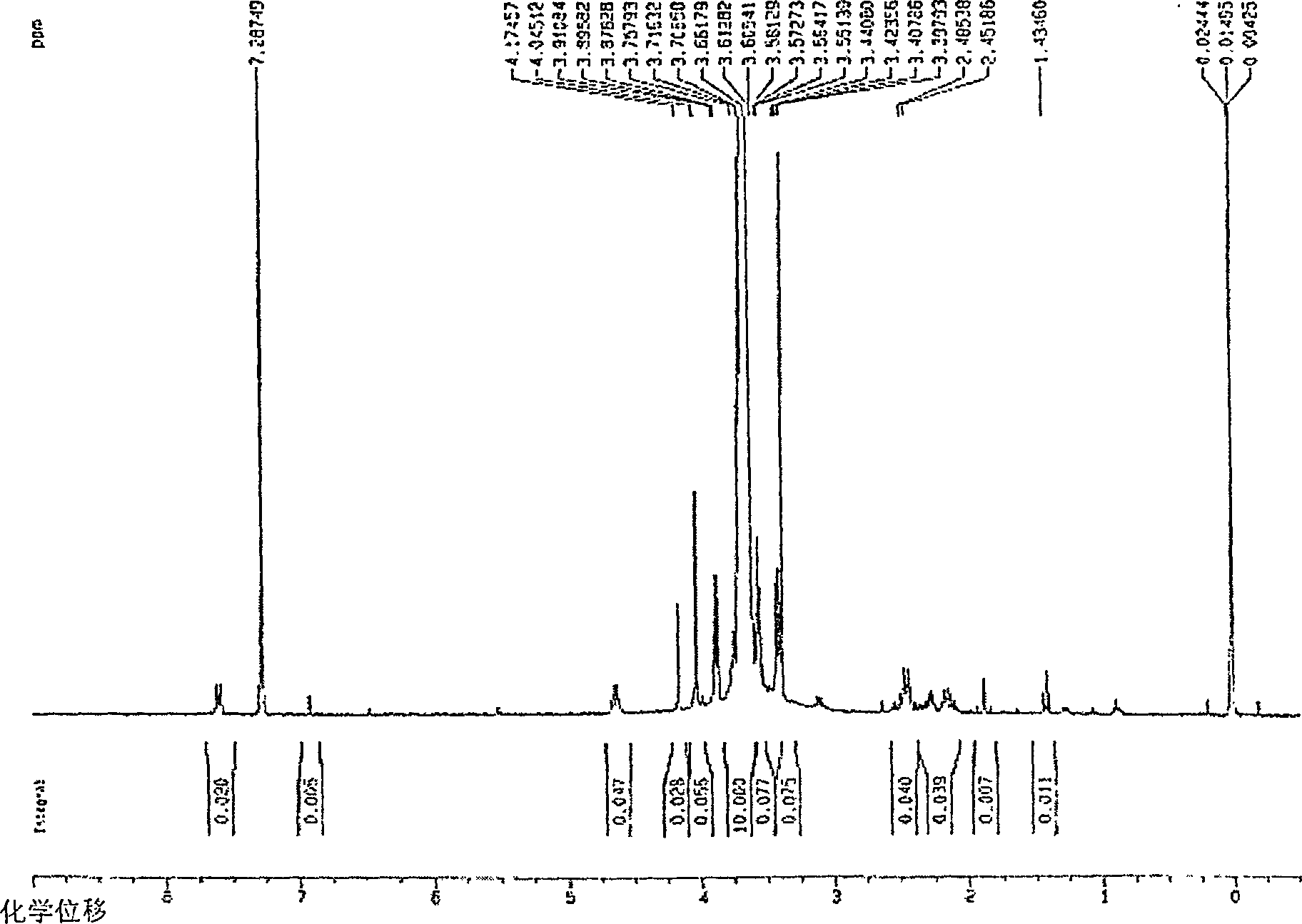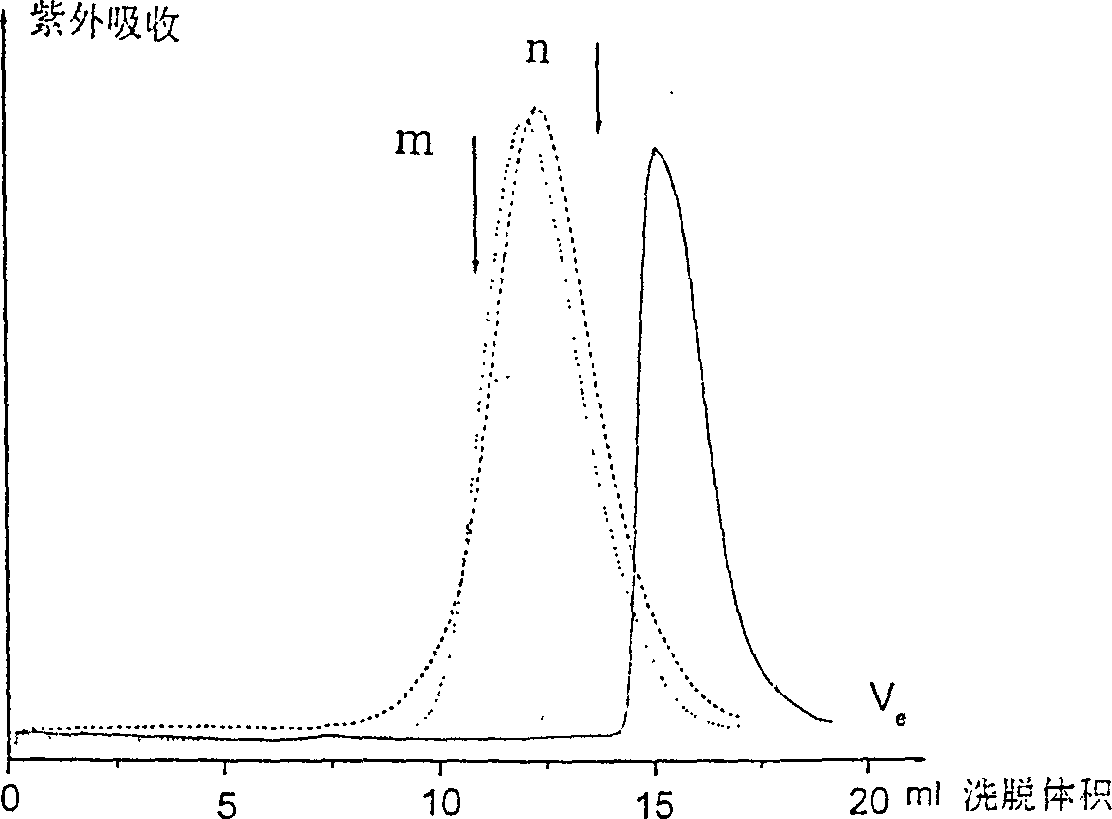Protein finishing agent with long tail of methoxy carbowax as well as preparation method and application
A protein modification and polyethylene glycol technology, which is applied in the field of modification of hemoglobin, can solve the problem of difficulty in controlling the molecular weight distribution of polymer products with a degree of modification, and achieve the effect of simple preparation method and high yield
- Summary
- Abstract
- Description
- Claims
- Application Information
AI Technical Summary
Problems solved by technology
Method used
Image
Examples
Embodiment 1
[0036] Example 1: Using L-glutamic acid and mPEG 5000 (M.W.5000) as the starting material for the preparation of mPEG 5000 -Glu, its preparation steps are:
[0037] 1 Preparation of L-glutamic acid diethyl ester hydrochloride: Add 30 g of L-glutamic acid into absolute ethanol, and pass hydrogen chloride gas under stirring conditions until saturation, and L-glutamic acid gradually dissolves. The solution was allowed to stand overnight, and then excess ethanol and hydrogen chloride were distilled off under reduced pressure. Anhydrous ether was added to the residue, and diethyl L-glutamic acid hydrochloride crystallized and precipitated. After filtering, washing and drying, white crystals of L-diethyl glutamate hydrochloride were obtained. The melting point of the obtained product is 107°C, and the theoretical value (E. Fischer, Chem. Ber., 39, 453, 1906) is: 107-109°C.
[0038] 2 Mix 10 g mPEG 5000 Dissolve in dried dichloromethane, add 10 g of activated manganese dioxide, ...
Embodiment 2
[0041] Example 2: Preparation of mPEG with L-glutamic acid and mPEG2000 (M.W.2000) as starting materials 2000 -Glu, its preparation steps are:
[0042] 1 Preparation of L-glutamic acid diethyl ester hydrochloride: same as step 1 in Example 1.
[0043] 2 Mix 8 g mPEG 2000 Dissolve in dried dichloromethane, add 10 g of activated manganese dioxide, mix well, and stir overnight at room temperature. The catalyst was removed by filtration, and the solvent was evaporated under reduced pressure to obtain an intermediate oxidation product. Dissolve the obtained intermediate oxidation product in 3% hydrogen peroxide aqueous solution (excess hydrogen peroxide), react for 24 hours, pass through Bio-Rad AG1*2 resin column, remove neutral substances, and then elute with 0.02M hydrochloric acid , to obtain carboxymethylated monomethoxypolyethylene glycol.
[0044] 3 mPEG 2000 -Synthesis of Glu:
[0045] Add 0.47g (2mmol) of L-glutamic acid diethyl ester hydrochloride into a 50mL Erlenm...
Embodiment 3
[0046] Example 3: Using L-glutamic acid and mPEG 750 (M.W.750) as the starting material for the preparation of mPEG 750 -Glu, its preparation steps are:
[0047] 1 Preparation of L-glutamic acid diethyl ester hydrochloride: same as step 1 in Example 1.
[0048] 2 Mix 3 g mPEG 750 Dissolve in dried dichloromethane, add 18 g of activated manganese dioxide, mix well, and stir overnight at room temperature. The catalyst was removed by filtration, and the solvent was evaporated under reduced pressure to obtain an intermediate oxidation product. Dissolve the obtained intermediate oxidation product in 3% hydrogen peroxide aqueous solution (excess hydrogen peroxide), react for 24 hours, pass through a Bio-Rad AG1*2 resin column to remove neutral substances, and then elute with 0.02M hydrochloric acid , to obtain carboxymethylated monomethoxypolyethylene glycol.
[0049] 3 mPEG 750 -Synthesis of Glu:
[0050] 0.94g (4mmol) of L-glutamic acid diethyl ester hydrochloride was added...
PUM
| Property | Measurement | Unit |
|---|---|---|
| molecular weight | aaaaa | aaaaa |
| molecular weight | aaaaa | aaaaa |
Abstract
Description
Claims
Application Information
 Login to View More
Login to View More - R&D
- Intellectual Property
- Life Sciences
- Materials
- Tech Scout
- Unparalleled Data Quality
- Higher Quality Content
- 60% Fewer Hallucinations
Browse by: Latest US Patents, China's latest patents, Technical Efficacy Thesaurus, Application Domain, Technology Topic, Popular Technical Reports.
© 2025 PatSnap. All rights reserved.Legal|Privacy policy|Modern Slavery Act Transparency Statement|Sitemap|About US| Contact US: help@patsnap.com



